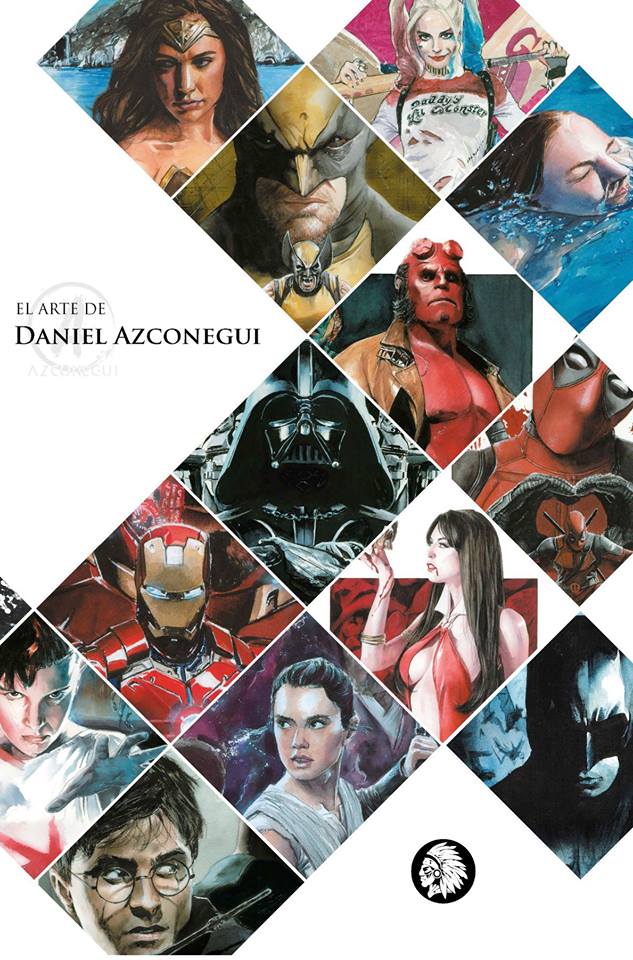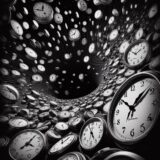
Want to increase the future value of your collection by up to 100%, without changing your tastes, your budget, or how many pieces you can squeeze onto your walls? Resolve never to buy a painting that isn’t signed. Because what’s the most common question people ask when they first see, or are offered, a work of art? “Who’s the artist?”
And given two identical works of art, one signed and the other not, the one signed is worth more and will sell for a higher price than the unsigned one.
WHY?
Simple: When an artist signs his or her name to a work of art, that essentially means “it’s complete, as I wish it to be shown”…I claim it as mine, I want credit for it, and it has my official “seal of approval.”
It doesn’t matter if it’s signed on the back, the front, the edge, the top or the bottom. Or, like classic cover illustrations by well-known, Hugo Award winning artist Don Maitz—”hidden” in plain view. Makes no difference. It just has to be there, and be legible. And by that, I mean a signature that can deciphered—and not just by people who are experts in your collecting field. Illustrators like Maitz like to play visual games with viewers, and many commercial artists have developed a penchant for playing those games for a good reason: art directors who (historically) had the nasty habit of cropping out the artist’s signature.

So to avoid that, artists started “hiding” their signature within the painting, cleverly making it integral to the painting itself. Maitz is known for doing that, in very innovative ways. So do artists like Romas (Kukalis).
But, it’s astonishing how many artists sign their works with their egos—and not posterity—in mind. It’s amazing how many think it’s cute to sign “in code” or in such a way that only people who know them, or “insiders” will be able to read it. And It’s astounding how prevalent this practice has been, in SF/F art world—and in the art world, in general.
I can understand how the habit of encoding/signature shorthand was better than nothing—by which I mean, better than nothing (neither signed nor credited on the product or in the book) BUT this kind of thing is worrisome and if you can avoid taking possession of artworks before the artist has “countersigned” in full on the back, you can save yourself (and your heirs or other owners) a lot of trouble down the line. Because…Sooner or later people will be born who will not know WHO the heck signed with “F” in a broken circle or “J” in a rectangle or almost undecipherable initials “DB.”



If you are buying a work from a living artist, and they like, insist upon, or even might be known for, signatures that are illegible, truncated, stylized monograms, initials, and YOU can exercise any control at all over such matters…at least get the artist to sign legibly, their name in full, on the back. So that your beneficiaries (or another owner, down the line) doesn’t need a reference book to figure out who created the art.
Attribution Qualifiers
Also problematic is art that is not “exactly” signed but which comes with “qualifiers” as provenance. Many an innocent buyer has been taken in by terms such as “School of,” “Pupil of,” or “After”—labels that are commonly used by art historians to associate a work by an unknown artist with the name of a known artist whose oeuvre is stylistically similar or otherwise related to the work…but IS NOT by that artist’s “hand.” Labels like “attributed to” may at first carry specific information—warning a potential buyer that there is uncertainty as to whether the work is by a known artist…but the unscrupulous have a habit of ditching the label (or glossing over it) when opportunity arises. There is a clear and major difference between art that is described as “signed by X” and art that is described as “After X,” for example, and it doesn’t mean done “after” X’s death. 😉 For a good rundown of these differences see the list prepared by the Cataloguing Advisory Committee of the Art Libraries Society of North America.
Authenticity
For unsigned artwork to be worth close to what a signed piece would go for, there must be so well-defined a visual signature/style of expression that a signature is unnecessary to identify the artist, plus—no known forgeries. In those case, a signed letter from the artist’s estate or legal representative, attesting to the provenance (history of the piece) and its authenticity will usually suffice for buyers to have confidence in the purchase. In our field of collecting, the Richard Powers and Richard Clifton-Day come to mind as examples—these are two artists I’ve represented in sales of original—but unsigned—works. When he died in 1998 there were several pieces in Powers’ inventory that he had not gotten around to signing. His style of expression is so well known, however, that letters of authenticity from his son, Richard G. Powers, are accepted in lieu of signature. The British illustrator Clifton-Day, on the other hand, signed practically none of his published works, either from lack of habit or the common practice, then, of illustrators not signing the painting they produced for commercial use. In his case, his widow took on the chore of affixing signed labels to the back of every work sold certifiying that it was his work.
Even with a signature, there can be questions as to authenticity. As mentioned above: the existence of known forgeries or counterfeits matters when it comes to art. In the case of very important artists, such as Man Ray, for example, estates are often asked to authenticate examples of the artist’s work, and the matter of certification can be worth millions to an owner who fails to get their piece verified. This plays a significant role in cases where a catalogue raissone’ exists: such compendiums ostensibly contain documentation of every work the artist has created over his/her career. When a piece comes to market, it is checked against that catalogue and is determined—on that basis—to be either “good” (in) or “questionable” (out). Failure to be included has BIG MONEY implications for owners of expensive works of art.
Digital work presents other problems. Not only are many of the artists uncredited except by fictional “handles” online, but there is no true “original” to sign. But that’s a topic for another day! In the meantime….try to get your art signed!











Interesting article, Jane. For me it raises questions about the intrinsic value of art. If it’s a commodity, with some potential future fiduciary value, then, sure, a signature’s important. It’s up the the individual – both taste and pocketbook. I have a a couple of signed works, one by a Scottish artist called Pat Douthwaite, a really lovely drawing of her dog, Henry Dooley. I don’t want to part with it, but once when I needed some extra cash, although the work was signed, I was asked for A) a certificate of authenticity, and B) proof that I’d actually bought it. This was from an auction house, though I am not sure the same applies in other types of sale. I was seriously hacked off by this unreasonable request. First, because I bought it 20 plus years ago, the organisation I bought it from no longer exists (I actually worked for them), and I never saw the need to ask for all that other stuff, too. So, perhaps a word of extra caution to your readers – get the other documentation, if you can, if you plan on selling at a later date.